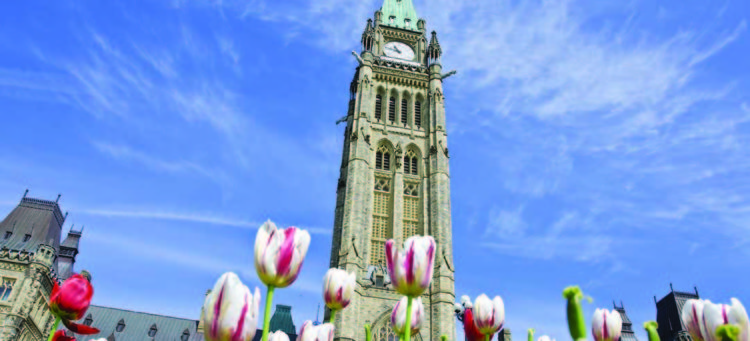
Trending
Summer in Ottawa: A capital adventure!
June, 2017
Ottawa, the nation’s capital, is a feast for the senses in all seasons. Summer is always a great time to visit, but the summer during which we celebrate our 150th anniversary of Confederation will be particularly memorable. Besides the usual selection of activities and attractions, there is an extra helping of fun to celebrate Canada’s sesquicentennial. Here are some of the must-see highlights.
Parliament Hill (The Hill)
The historic buildings that grace our currency are located in downtown Ottawa, perched overlooking the Ottawa River. The epicentre of Canada’s legislative system is composed of the Centre Block (which has the Senate and Commons chambers) and the East and West blocks (which have ministers’ and senators’ offices). The Centennial Flame burns on the central lawn, and there is a collection of statues of historically significant people scattered around the grounds, as well as free, guided tours to enjoy daily.
While there, don’t miss the daily changing of the guard ceremony (10 a.m.) and a nightly Sound and Light show (starting on July 11; times vary depending on sunset). There are even weekly yoga classes (Wednesdays at noon, May to August, all weather dependent). If your visit coincides with July 1, you will see the organized chaos that defines Canada Day. The festivities for about 100,000 people start in the morning and continue into the wee hours of the (next) morning. You will find street performers and face painters during the day and revellers later in the evening.
ByWard Market (The Market)
Bounded to the north by Cathcart Street, the east by Cumberland Street, the south by George Street and the west by Sussex Drive, the ByWard Market is the heart of the action. The central market building (with its selection of casual international eateries and touristy trinkets) remains open year-round, while vendors appear on the streets and sidewalks outside, weather permitting.
Don’t forget to sample some of the cuisine while strolling through the ByWard Market. Some of the specialties worth sampling:
Beaver tails—Sure you can get them in Banff, but these deep-fried pastries are more authentic in Ottawa.
Poutine—How to improve on French fries and gravy? Cheese curds from St. Albert (read on!).
Obama cookies—After President Obama stopped at the Moulin de Provence to buy a cookie, the maple leaf shortbread cookies were christened “Obama cookies.”
Between Parliament Hill and the ByWard Market, you will find purveyors of all manner of sightseeing tours: an Ottawa River cruise, a Rideau Canal cruise, a “Hop on, hop off” city bus tour. You will also find the Bytown Museum, a water taxi to take you across the Ottawa River, and the Rideau Canal—a UNESCO World Heritage Site.
Museums & History
The National Capital Region is chockablock full of museums, all of which have free admission on certain days and times.
The Canadian Museum of History is located in the Hull sector of Gatineau, directly across the Ottawa River from the Parliament Buildings. The impressive structure will look familiar, as it was designed by Douglas Cardinal.
The Canadian Museum of Nature, housed in the “castle” on the fringe of downtown, is a wonderland for the kids. Dinosaurs, fossils and live creepy-crawlies will keep them entertained for hours. For grown-up entertainment, check out Nature Nocturne, a once-monthly themed event with dancing, music and a cash bar.
The Canadian Aviation and Space Museum is located at the Rockcliffe Airport along the Aviation Parkway. Explore the history of aviation, and for an impressive aerial view of the National Capital Region, try a flight in the open-cockpit biplane (helmets and goggles provided).
The Canadian War Museum is our national museum of military history, located less than 2 km west of Parliament. Take note of the small windows on the sloping, copper-clad roof: they spell out “Lest we forget” and its French equivalent, “N’oublions jamais” in Morse code. For serious history buffs, there is also a network of small community museums across the region.
Gatineau Park
Only a hop, skip and an interprovincial jump away is Gatineau Park, the natural jewel of the National Capital Region—and the only federal park that is not protected by the National Parks Act. Stop at the visitor centre in Old Chelsea to get your bearings and a map to help you navigate the 361 square kilometres of park and its trails. From there, pick your poison—there are short jaunts and lengthy hikes. The Sugarbush trail is an easy 1.9 km stroll, starting at the visitor centre. The 2.3 km Pink Lake trail meanders around Pink Lake (which is actually green) on a carefully maintained trail and boardwalk. A 12 km walk (round trip) on a wide, reasonably level trail, takes you to the Lusk caves—a great place for a dip after working up a sweat. A slightly more strenuous 4.5 km climb to the Luskville Falls yields impressive views when you stop to catch your breath.
For the slightly more adventurous, Camp Fortune (ski hill in winter, adrenaline zone in summer) offers an aerial course and zip-lining to keep you stimulated. For those who prefer to keep their feet on the ground, there is golf nearby: Dunnderosa golf club (an 18-hole course) and Dunn-D’s mini-golf. To finish off your outdoor activities, consider a visit to La Cigale, an ice-cream shop in Old Chelsea that’s sure to hit the spot.
Other adventures slightly beyond the city limit:
Wakefield—a funky and friendly village on the Gatineau River in Quebec.
Merrickville—a quaint town on the banks of the Rideau River.
Upper Canada Village—a living-history museum on the
St. Lawrence River.
St. Albert—yes, a twin city separated at birth. Visit the local cheese factory and purchase an “I love St. Albert” souvenir T-shirt. t8n











